Assuming the bird still is at earth potential when entering in contact with the wire (say, it jumped right on it from the pole).
There are lots of unknowns in this problem but let's try to fill some gaps with data we kind of know in humans. So until an EE stackexchanger who is an ornithologist shows up with interesting data, let's assume humans can fly and like to chill out hanging from a high voltage cable.
All objects and living things have an equivalent electrical capacity. The Human Body Model is a convention which dictates humans are equivalent on that aspect to a 100pF capacitor (let's assume it doesn't reduce much from the ground to 23meters high, and call it a worst case scenario). Now, let's assume the contact resistance between the cable and wherever the geometric center of that capacitor is, is 3000Ohm - taken from the "Hand holding wire" case of the table in another thread - divided by two for a two hands contact. Then the total duration of the equilibrium current, taken as 5 times the time constant of the equivalent RC, is 0.75 microseconds.
Effects of currents through living things depend on the magnitude of the current and the duration. I have never seen any study showing any data below 10ms (e.g. the same study cited above), which is not surprising as apparently the response time of the cardiac tissue is 3ms. For 10ms, the current that generates irreversible effects is 0.5A, and it seems to have settled at that point (little dependent on the duration), certainly down to 3ms. Let's assume that past that point, the cardiac tissue behaves like an ineffective first order system, attenuating 20dB/decade. The required current for similar effects would be 20*4.25=90dB higher, or 15811A. For a contact resistance of 1500Ohms as used above, it means the voltage of the cable needs to be 23GV!
Burns solely depend on the energy transferred, so theoretically a high voltage could burn for such a small time. But how high? Well, "Electrical injuries: engineering, medical, and legal aspects", page 72, states:
The estimated lowest current that can produce noticeable first or second degree burns in a small area of the skin is 100A for 1s
Edit: Note that 100A is quite high, it is unclear how the author defines "first degree burns on small area of skin", but I would guess it would be for an area bigger than an inch, burning all epidermis and some of the dermis cells such that they peel away.
So for 750nanoseconds, that's 133MA required! If we use again the 1500Ohms resistance from above, that means the wire would need to be at 199GV, which is insane. Chances are there will be other nasty effects before those burns appear, but neither 23GV nor 199GV sound likely in the near future. Side note, as J... raised in the comments, a 23GV cable would spontaneously arc with anything at Earth potential within 7.6km and therefore would require an incredible amount of isolation.
As if it wasn't enough, you may have noticed that the above assume the maximum current is applied for the entire duration of the equilibrium current whereas in fact it is a decaying exponential... The average current over this duration is in fact 0.2 times the maximum, so these values should really be 115GV and 995GV!
Warning: This does not mean it is safe to jump on and hang from high voltage lines, this is a quick analysis with rough data estimates and modelling and shall not be considered a justification for your actions.

